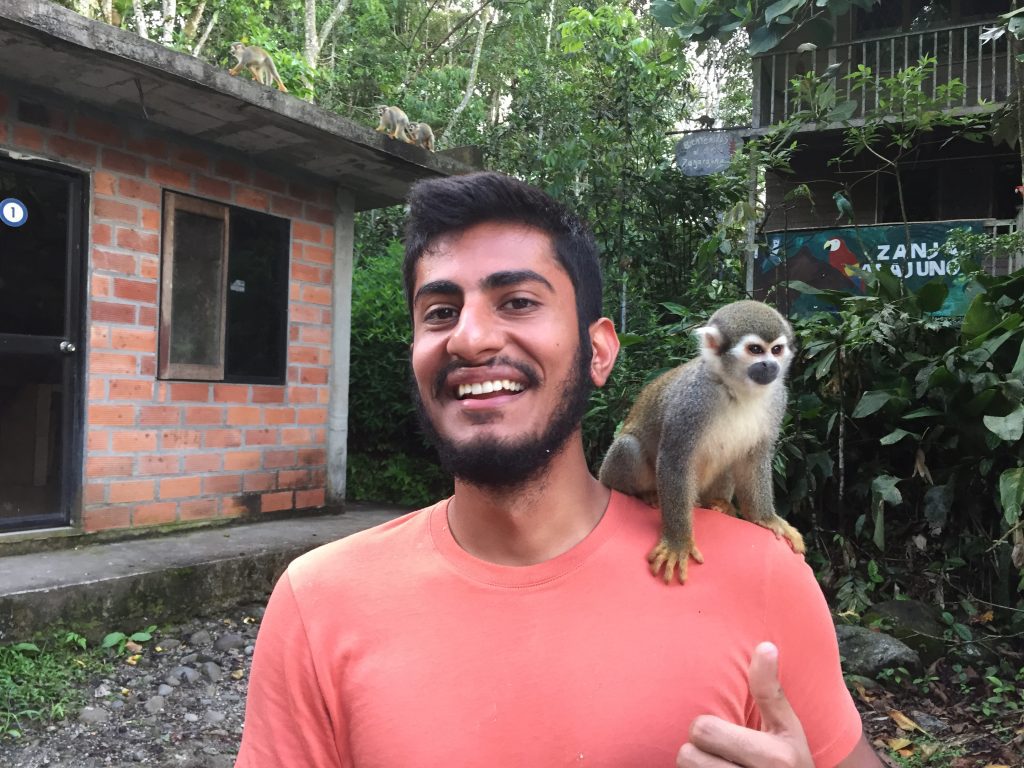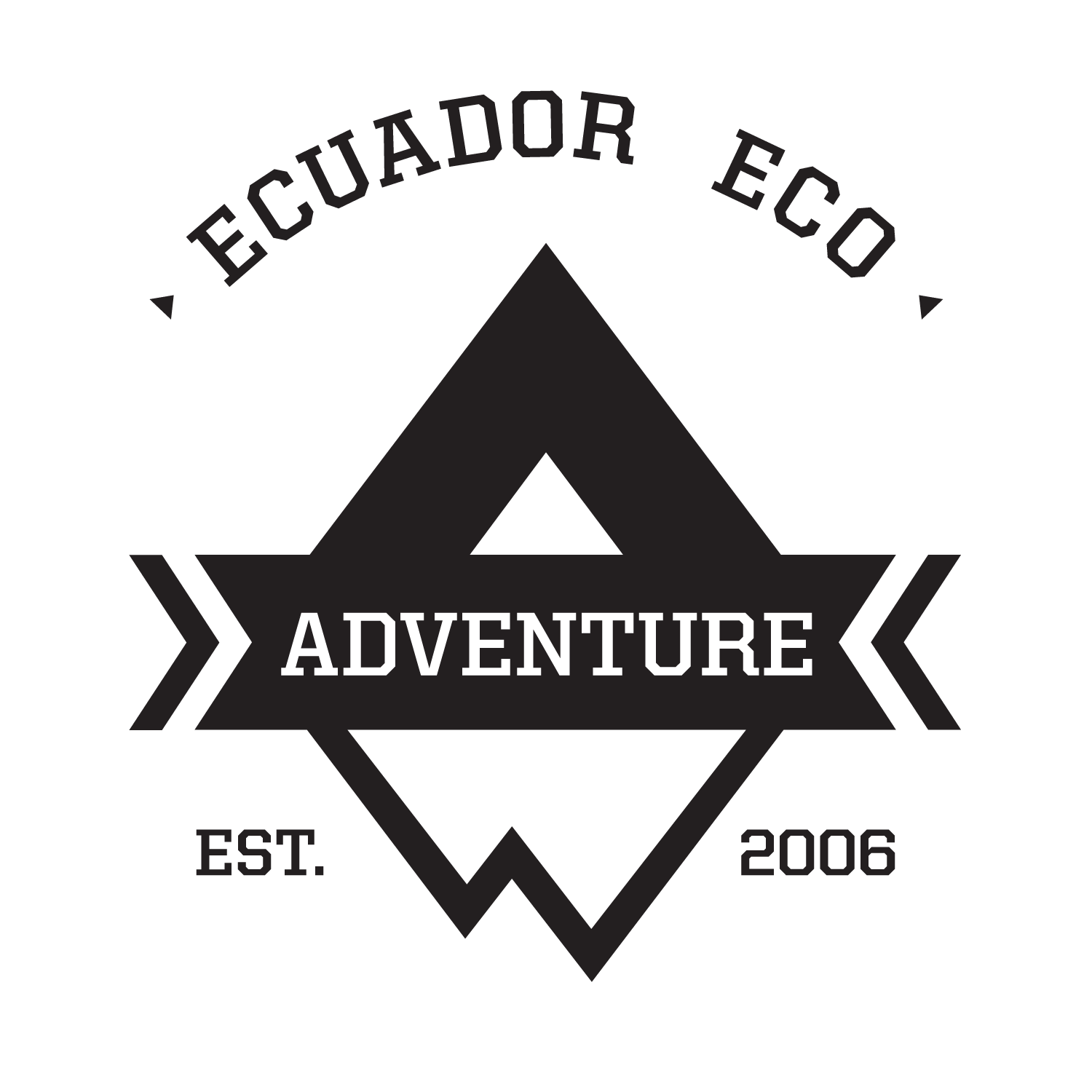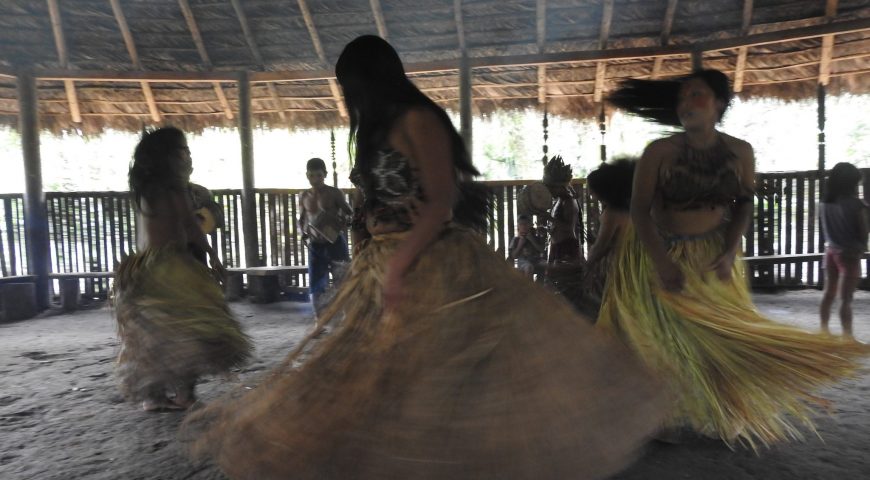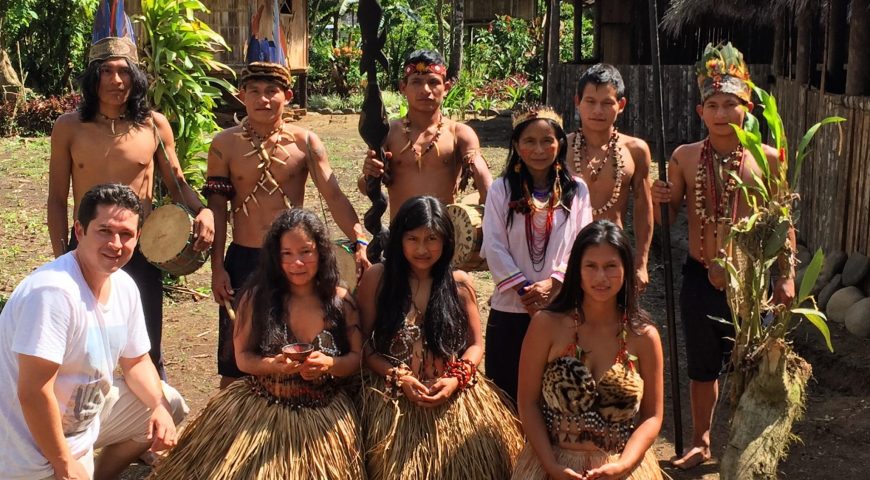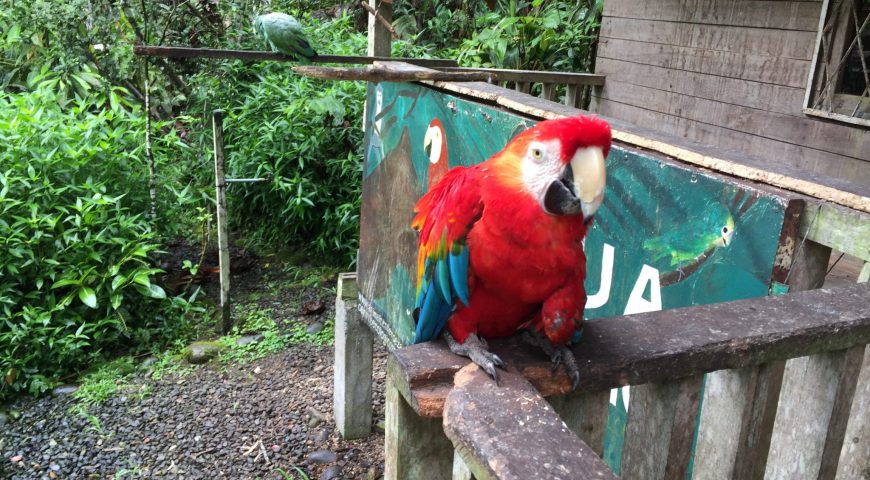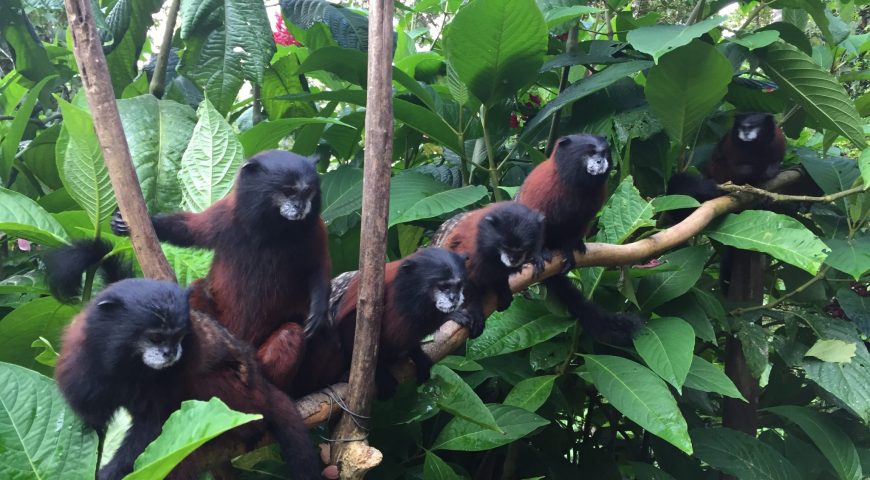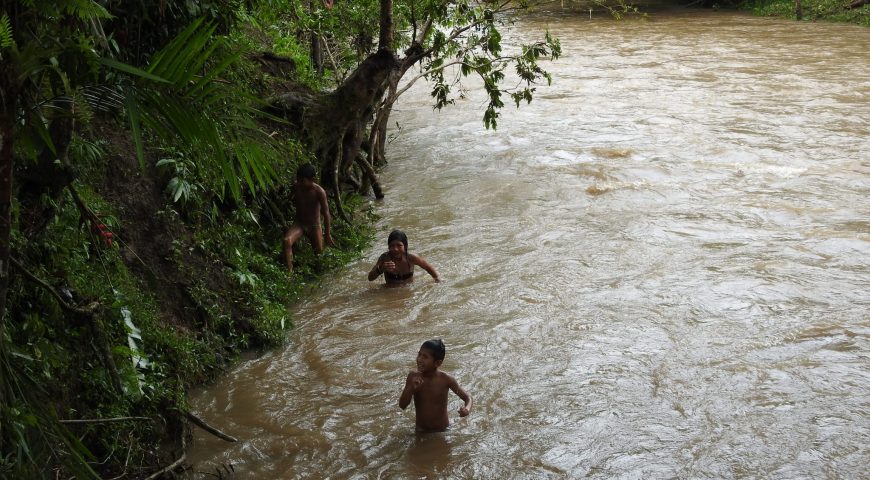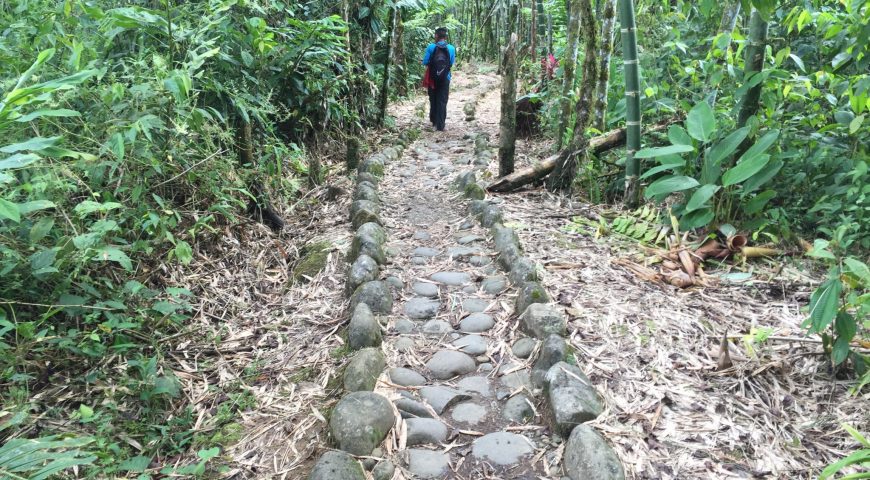Amazon Back Packer Road Trip
Amazon Road Trip
I woke up comfortably at six in the morning, mentally prepared for what was to be one of the most exciting days of my life, the Amazon Back Packer Road Trip. After a quick breakfast, we packed our bags and strapped in our rubber boots and sleeping bags.
We quickly filled gas in the car and began our journey to the Amazon. The drive was absolutely mind-blowing.
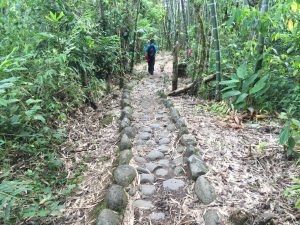 We started from Riobamba and took a route parallel to the Tungurahua volcano. It derives its name from the Quichua language, in which it means ‘Throat of Fire’. We were close enough to be able to witness the massive lava trenches in the structure formed by previous eruptions. Despite its destructive nature, the Tungurahua standing proudly at 5,023 meters was an impressive beast.
We started from Riobamba and took a route parallel to the Tungurahua volcano. It derives its name from the Quichua language, in which it means ‘Throat of Fire’. We were close enough to be able to witness the massive lava trenches in the structure formed by previous eruptions. Despite its destructive nature, the Tungurahua standing proudly at 5,023 meters was an impressive beast.
We drove for about two hours from Riobamba to Puyo, the descent in altitude was subtle but could still be felt. We drove through the beautiful Puyo city, which seemed very advanced in its infrastructure and construction; it was a whopping change from our starting point. From the narrow and empty suburban streets of Riobamba, we had entered into the commercial, cultural and political capital of Ecuador. We were soon on a highway that ran parallel to the Pastaza River, which eventually runs into the Amazon River. I could already notice the drastic change in the landscape but Wlady told me to calm down; we had not yet entered the Amazon.
We began driving through a seemingly endless tunnel and that’s when it happened; at the end of this tunnel was the beginning of the Amazon. Even though it was my first time, I could clearly say at once that this was the real deal. I have read so much about the Amazon and watched countless documentaries, but I was still not even remotely close to being prepared to actually witnessing its glory. The dense green forest seemed endless and the landscape was like I had never seen before. Ecuador contains a very minor portion of the Amazon Back Packer Road Trip, but it was more than enough to blow me away.
There is a very distinctive and peculiar cycle of life in the Amazon. The constant rain drains the soil of most of its essential nutrients and leaves an infertile layer of clay behind. It’s simply amazing that despite all that, the Amazon is what it is. It is the interdependence between its various plants and animals that allowed this forest to replenish itself for centuries. The forest behaves as a single organism where each and every element depends on the other for sustenance. The leaves fall and form thick layers of organic material in which new plants germinate. The plants depend on the animals for pollination and the animals depend on the plants for food and shelter. Often when there are plant species that are no longer found, there are also certain corresponding animal species that disappear or face extinction.
After a good four-hour ride, we left the highway and started driving through a narrow gravel track, which caused our car to constantly slip and slide. Wlady was an experienced driver; he did not let the quality of the road slow him down. We soon reached our first destination, the village of the Sachahuasi tribe. We had to leave our car and walk across and bridge and a fifteen-minute stone path. I learnt that the stone track we were walking on was actually made by the volunteers sent by Ecuador Eco Volunteer. You could see the happiness and content in Wlady’s eyes with every step he took on the track. We now crossed into the forest and were in a community village in the middle of the Amazon; it was an unforgettable spectacle to say the least. Upon clay grounds stood many large huts made of wood and straws. There were about fifteen to twenty huts for families and a few large ones for social gatherings. Again, the volunteers had played a major role in designing and building these structures.
Compared to the other tribes, the Sachahuasi had come a long way in a somewhat modernizing their village; but only to the extent of making it habitable in the current state of affairs we live in. They had mattresses and mosquito nets in their rooms; their common rooms had light bulbs and wooden benches. This was an example of a community that was open to outside influence but not at the cost of relinquishing their traditional way of life and community values.
All the members of the tribe used their traditional kichwa language while some were educated in Spanish in order to keep a limited contact with the outside world. Their children go to schools to receive education and they openly invite volunteers and not-for-profit organizations to help them with construction, sanitation and education.
Several members of the community, who had recently changed into their traditional clothes to showcase their culture and traditional practices to us, greeted us warmly with hugs and handshakes. Their clothes were peculiar; the materials they used ranged from straws and beads to animal skin and bones.
They offered us their traditional welcome drink while we addressed each other and spoke great at lengths about the development aid they had been receiving and their expectations from our organization. Then, it was time for their traditional dance, where the men beat their drums and made high-pitched sounds while the women danced around the fire. It was truly an amazing form of dance that was very enjoyable to watch.
We were invited for lunch where we ate fish that was freshly caught in the river. The appetizer was special; it consisted of fried queen ants, which were considered quite the delicacy. After a minute of my life flashing in front of my eyes, I tried one. It was surprisingly good. After subtly emptying the rest of my appetizer into Wlady’s plate, I went back to my fish.
After lunch, we received a tour of the village where we visited some rooms and resting areas for the villagers and the volunteers. It was all very impressive. The volunteer rooms seemed to be the best of them all, located right next to the river. Each room had a hammock that faced the Pastaza River and would be an ideal place to relax after a long day of work. I could not wait to be back there on my own.
This showcased an important facet of the Sachahuasi culture, their respect and care for their guests by reserving the best rooms in the village for them.
Lastly, we were invited to see their workshops where, with the help of volunteers, they had established a successful way of sharing a part of their culture with the outside world while at the same time, earn some money on the side. The products ranged from pieces of jewelry to colorful items of clothing. It was really inspiring to see the level of craftsmanship and precision that they had used in making each and every item.
I feel that it was extremely important for me to see this in my first week of working for Ecuador Eco Volunteer. I am always skeptical about the idea of development aid and the motives behind it, but this village definitely was a thriving example of how this aid, if properly managed and distributed, can change lives for the better. The Sachahuasi people got exactly what they asked for, nothing more and nothing less. This is one of the many success stories of the organization that I am proud to be a part of.
After bidding farewell to the Sachahuasi, we began yet another long journey, our journey to the Zanja Arajuno Wildlife Sanctuary. After another never-ending gravel track deep into the Amazon forest, we had arrived at our destination. As soon we parked in front of the rescue center, we could hear some rustling in the trees above us. Within minutes, over thirty-forty adorable squirrel monkeys had surrounded us. I was too quick to present our gift for them. As soon as I took the bananas out, the cute little innocent monkeys turned into little monsters. They descended upon us like a cloudburst. With about five of them on my head and shoulders, I struggled to peel the bananas and break them into pieces. Within seconds, they were bored of my slow banana-peeling skills, and decided to take matters into their own hands. After having lost my entire supply, I was covered with peels and leftovers. Some of them graciously stayed back to give us enough time to take pictures.
The squirrel monkey is one of the smallest members of the primate group and there are five species of squirrel monkey that can be found in Central and South America. They are usually found in dense tropical rainforests, wetlands, marshes and mangrove forests. I learnt that they spend about 99% of their lives in the trees and barely ever touch the ground. Because of their small size and vulnerability, they live in ‘troops’ that usually consists of forty-fifty members but can easily consist of up to five hundred!
Lucero, a sweet tiny Colombian lady who runs this rescue center with her Ecuadorian husband, then welcomed us. While we were appreciating the beauty and the location of their sweet wooden house in the middle of the Amazon, Medardo, the husband appeared from the house. A big daunting man adorning only a pair of basketball shorts was nothing short of a wonder. He had a close resemblance to Balu from the Jungle book, which made me appreciate and like him even more.
Medardo runs a successful rescue center where he takes care of a variety of monkeys, Macau and Parrots. This human family lives in perfect harmony with the natives of the Amazon and its animals. They live in a way we were supposed to live, before we lost our way. With a voice of a lion, Medardo was still warm in his greetings. There are some people whose faces get etched into our memories. At one instance, I knew that I would always remember Medardo, a big shirtless man with broken glasses supported by merely one tiny string of cloth on one side of his face and a cigarette planted permanently to his mouth.
We were invited into their home, which was as if it were pulled out of an old fairytale. It was a beautiful little house planted picture-perfectly in the middle of the Amazon forest. We sat around a round red table in their living room next to the kitchen, where Lucero served us coffee. My limited Spanish skills allowed me to understand only a little about their conversations. But I could tell that Medardo had some strong opinions about the country’s political system.
In a few minutes, he was out with his guitar. Before we could prepare ourselves for what was to come, the lion voice transformed into that of a nightingale. His heavy scruffy voice was so pure that we were, at once, wrapped in attention and could barely look away. He was a phenomenal guitar player, an sang along in a low-pitched voice. His songs ranged from ballads of love to those of politics and war. My personal favorite was the one dedicated to the high-class society, criticizing their tall buildings, large supermarkets and addiction to the Internet. It was a little harsh but hilariously true.
Our private concert was over in a little over an hour and his wife then brought us dinner; a plate of eggs, sausages, rice and avocado. Even the food was an example of a lack of conformity with modern social conventions. Who ever decided that eggs and sausages were only breakfast food? It was certainly someone who hadn’t tried Lucero’s cooking. It was simple and yet absolutely delicious. After a hearty meal, we talked some more and Lucero showed us videos of their recently deceased Tapir. She was Medardo’s second love, after his wife. These beautiful creatures have been classified as endangered and vulnerable and are very rare to spot, even in the Amazon. This Tapir was a part of their family, and was rescued when she was a baby and somehow got separated from its family and found her way to Medardo.
This again, was an example of the good work a few people dedicate their lives to. This small family consisting Medardo, Lucero and their son David lives an inspiring story of what it means to live our lives for others and to dedicate every day to giving back to the planet that has given us so much.
I knew, almost immediately, that I had come back here someday.
By Rohan Wadhwa – 2016
